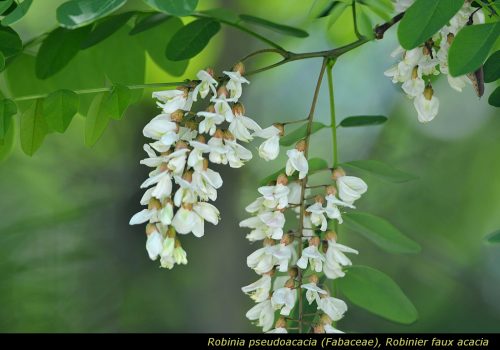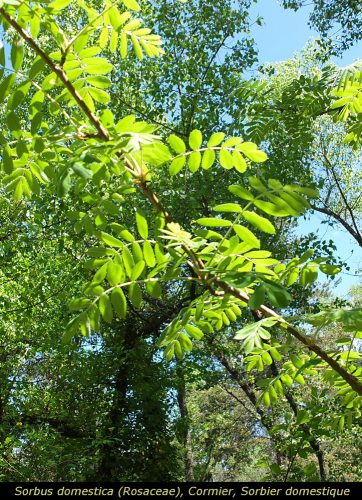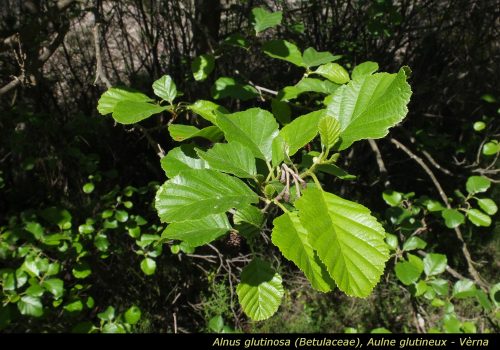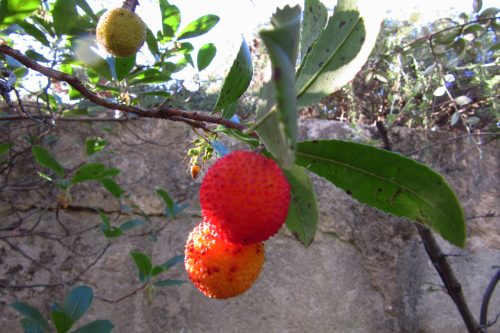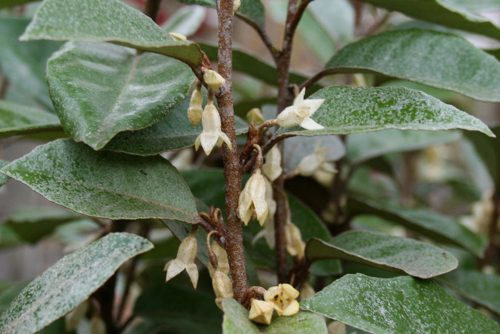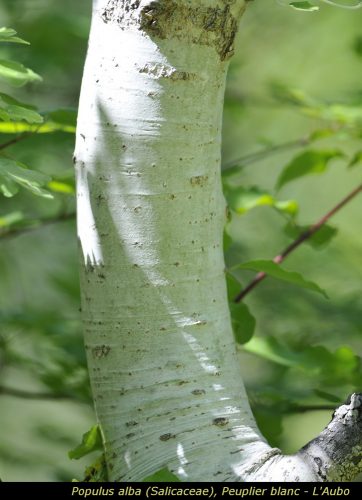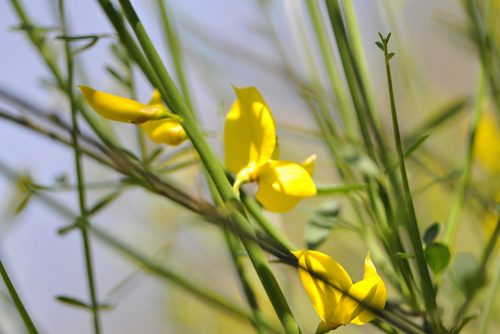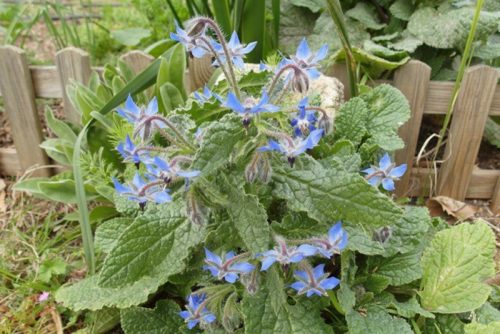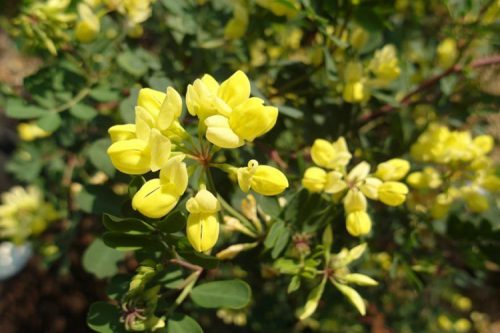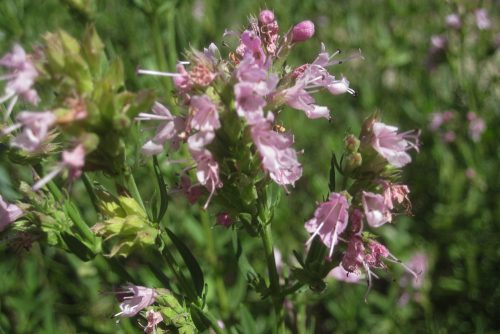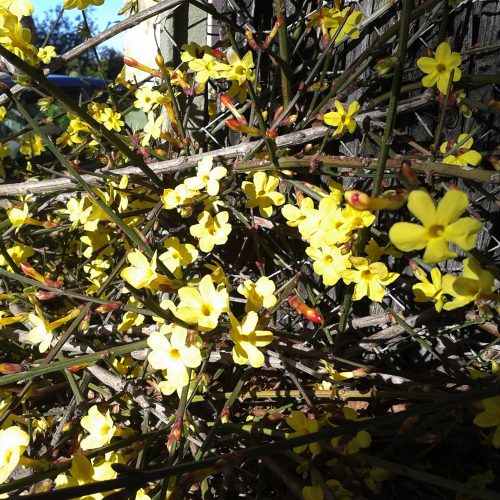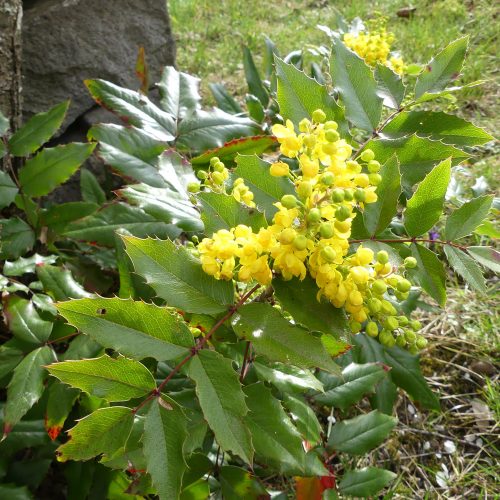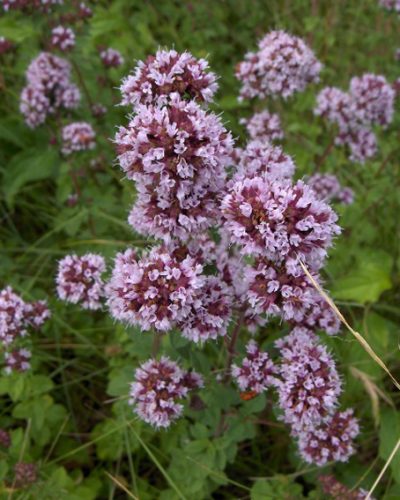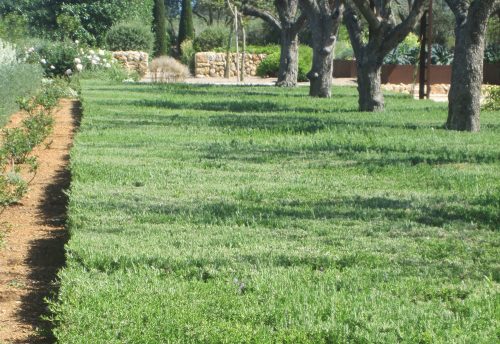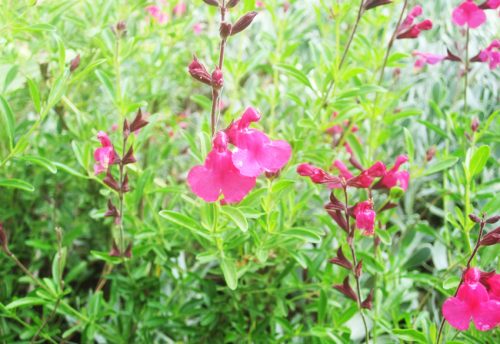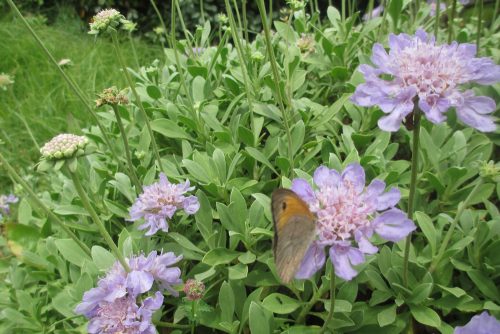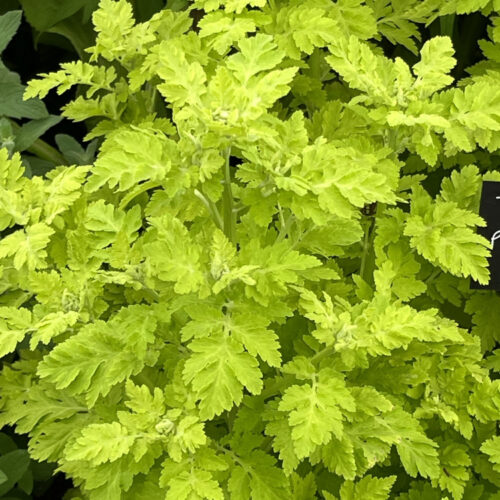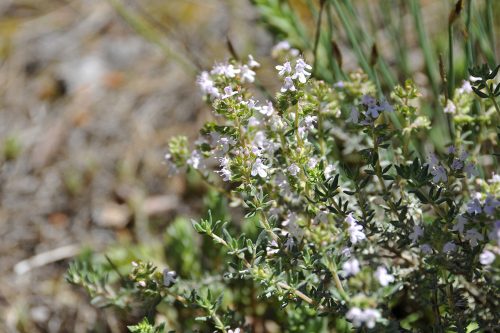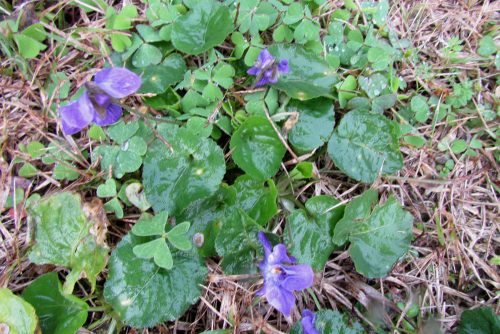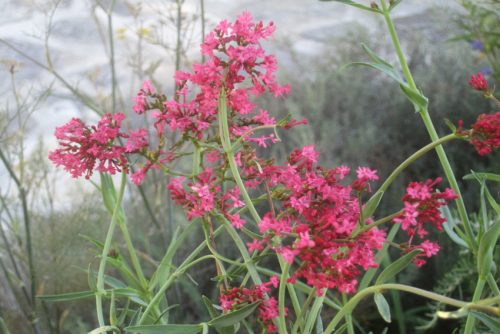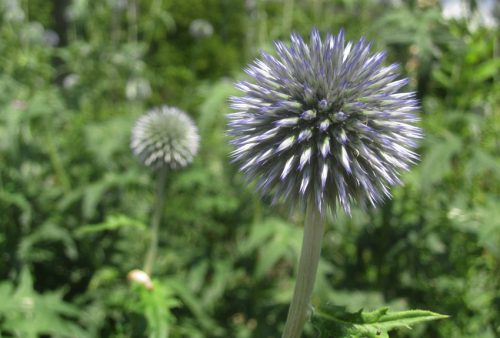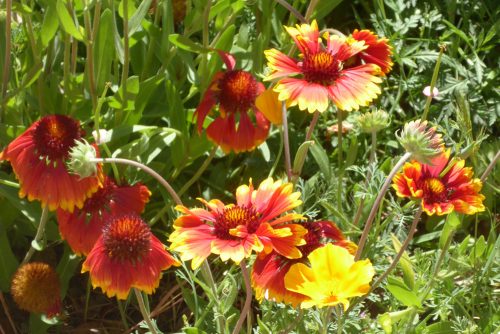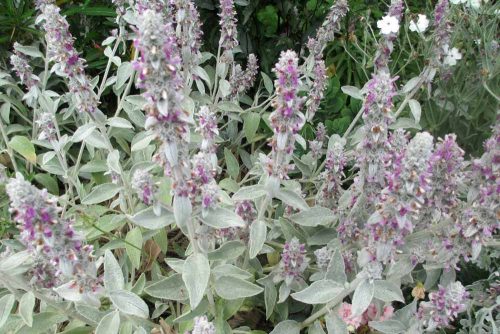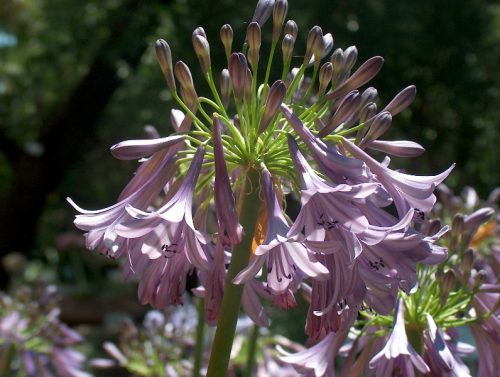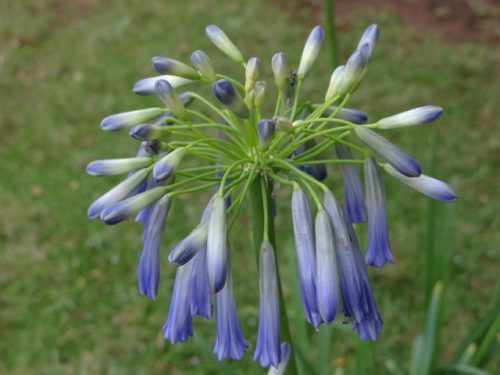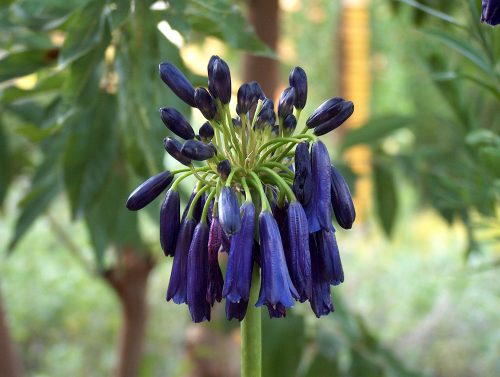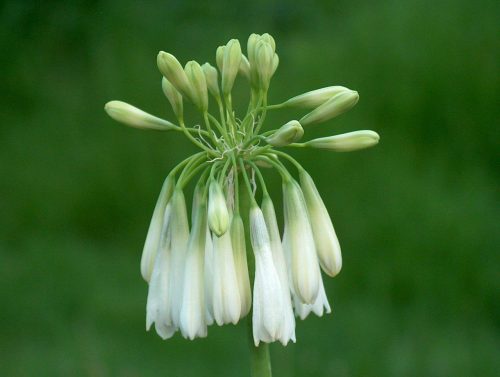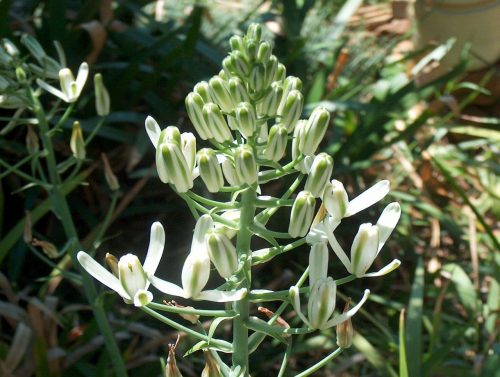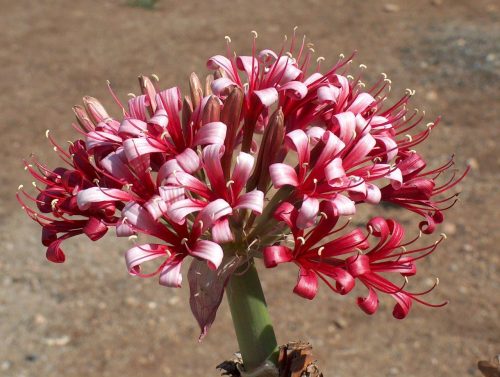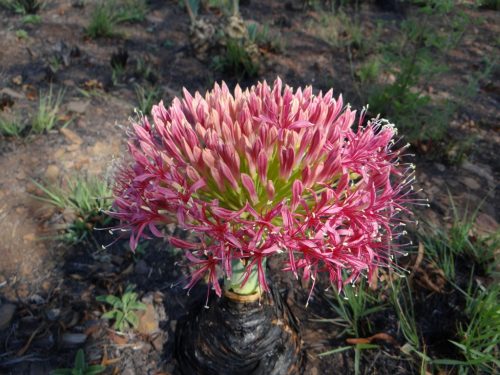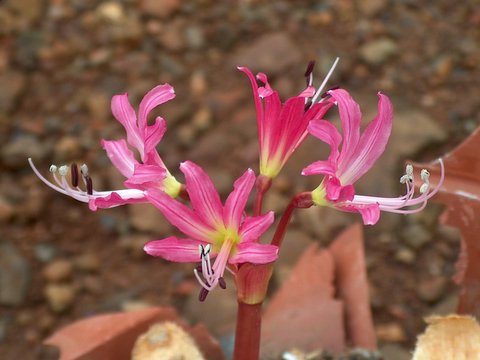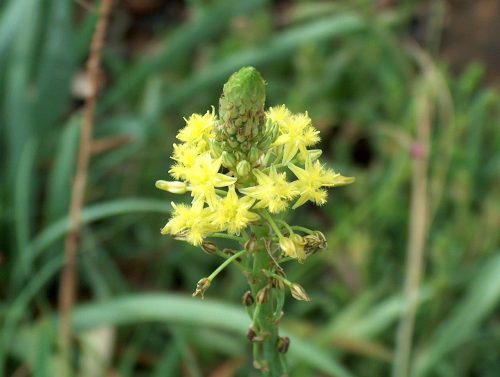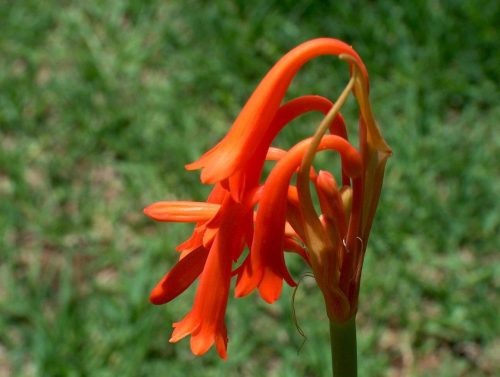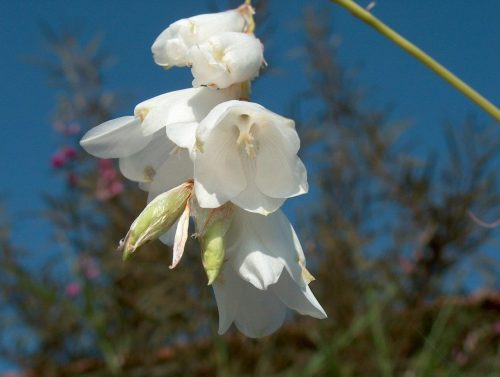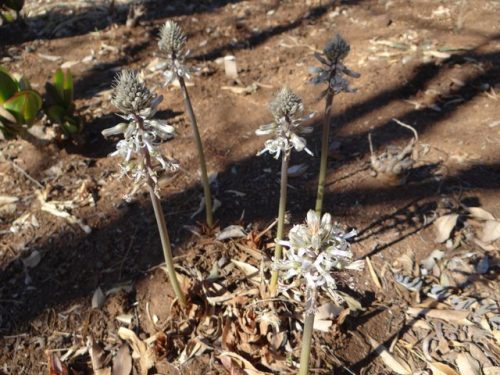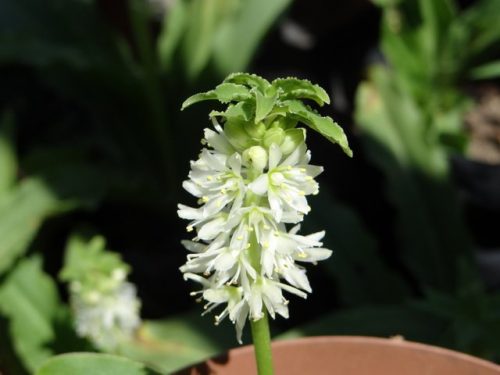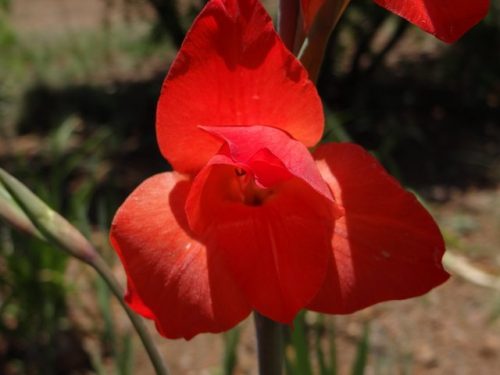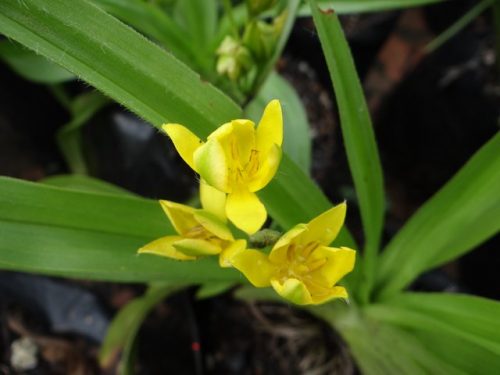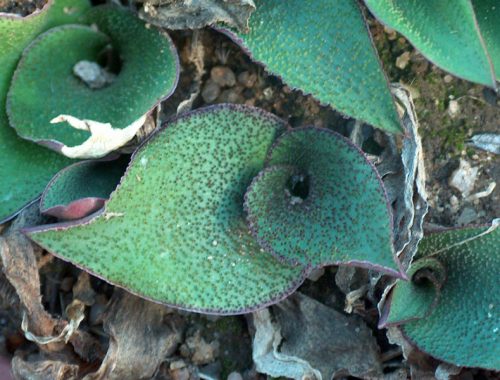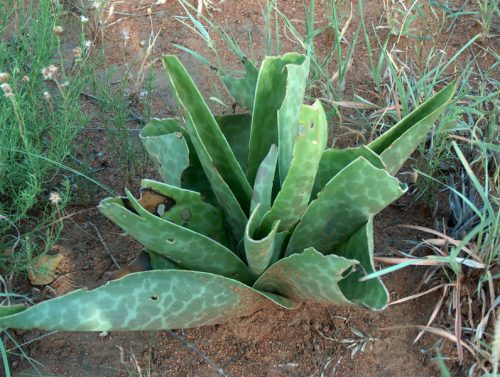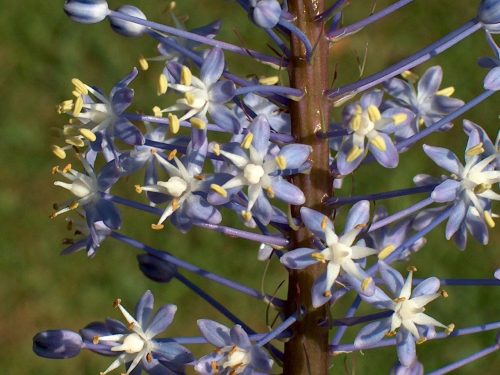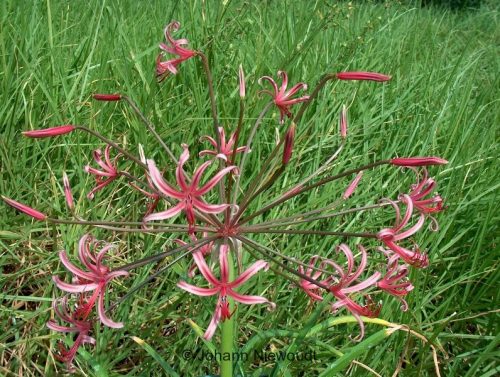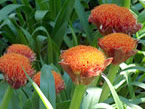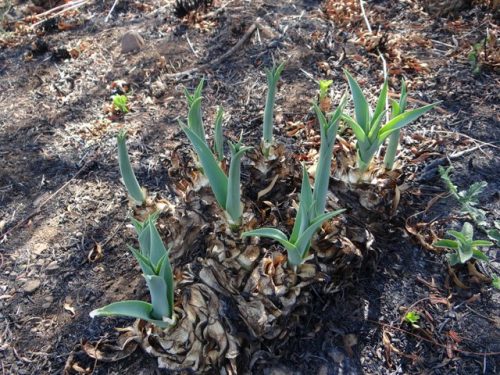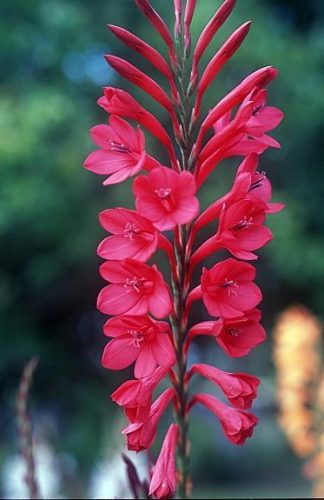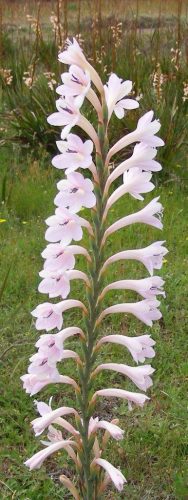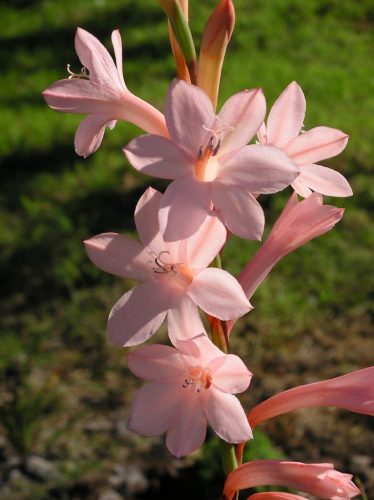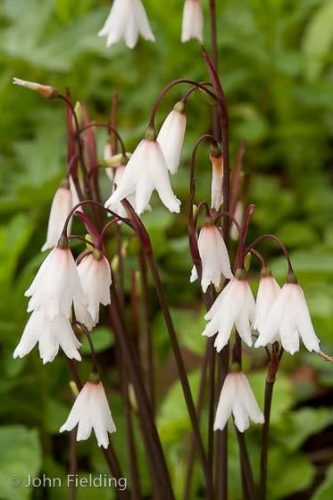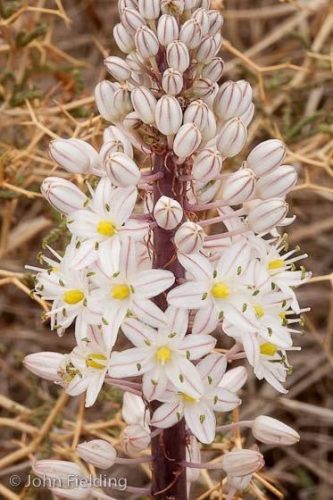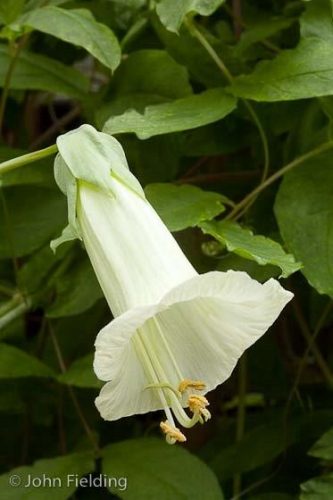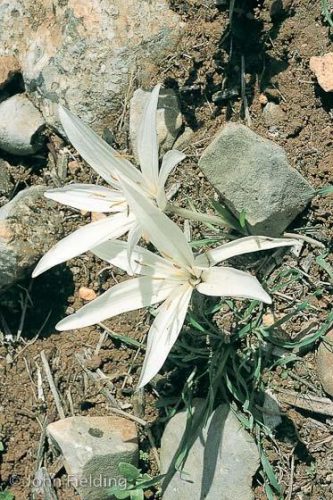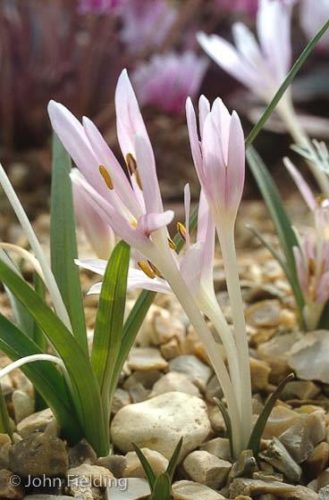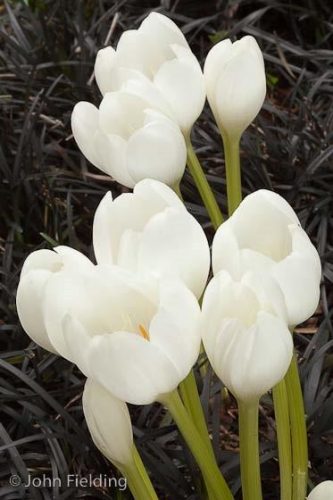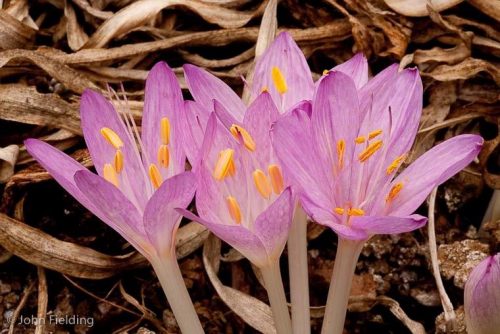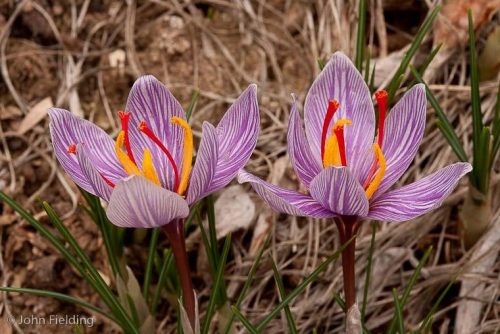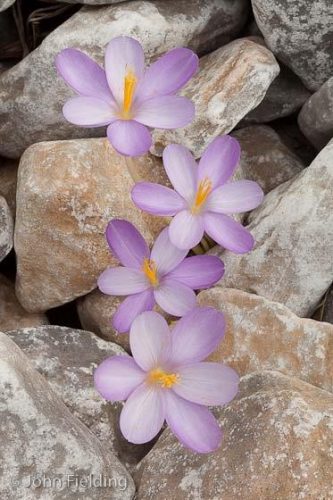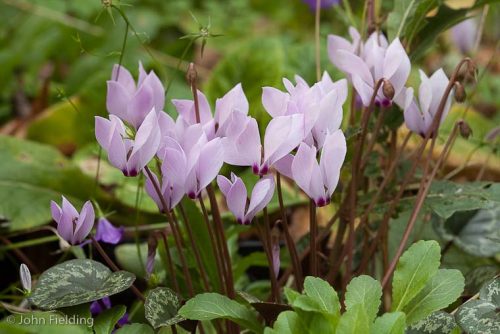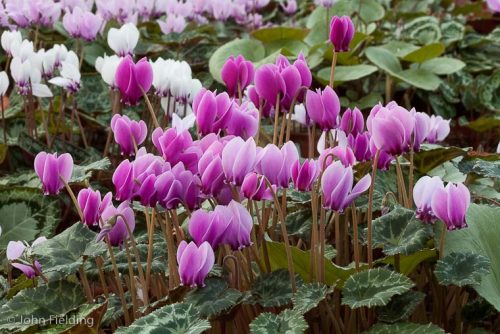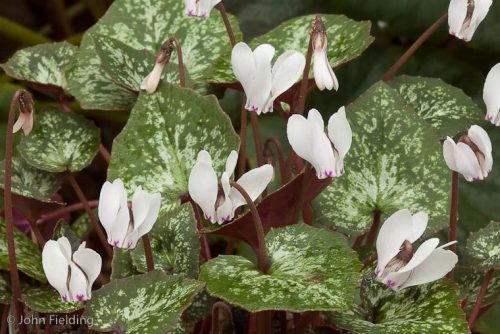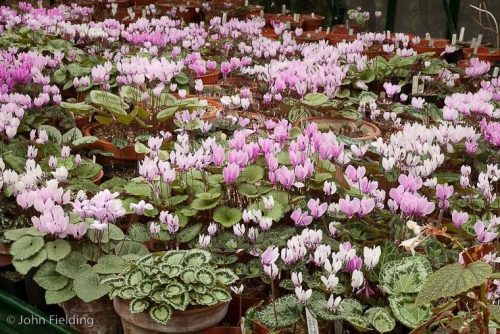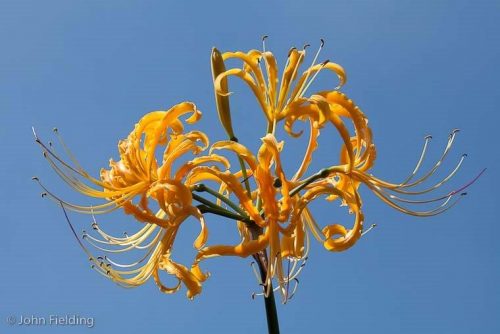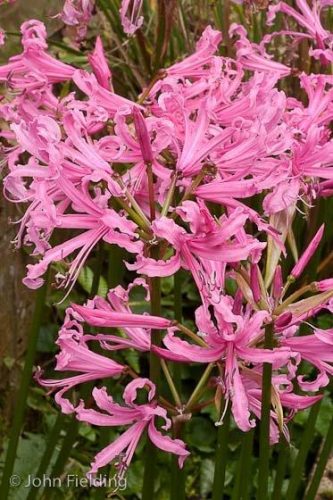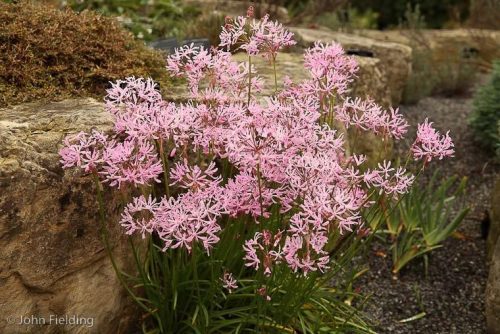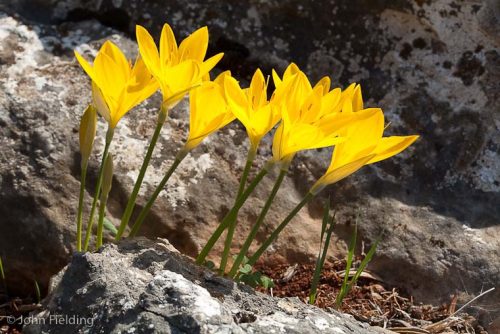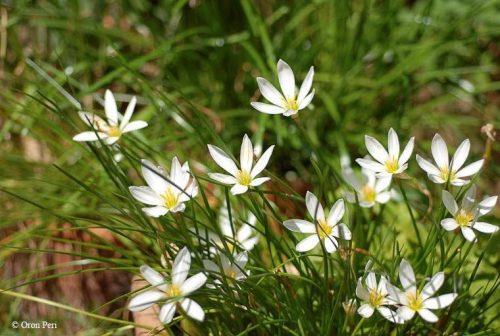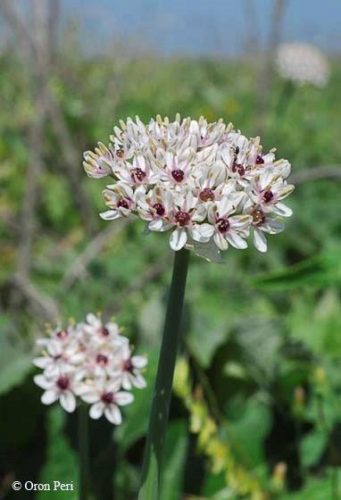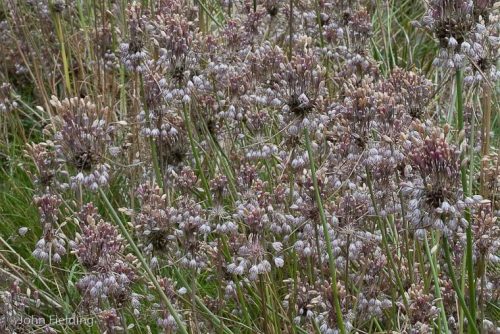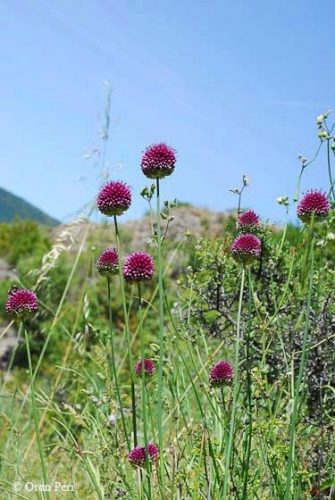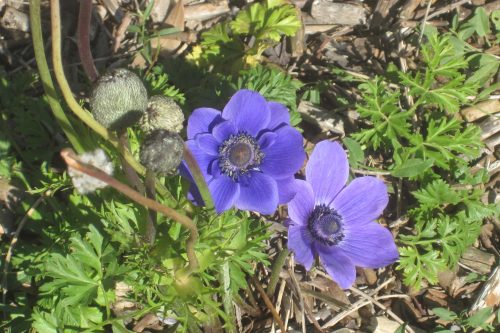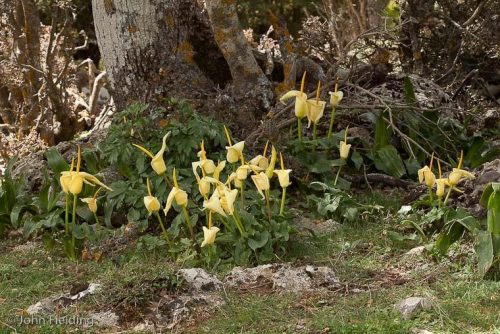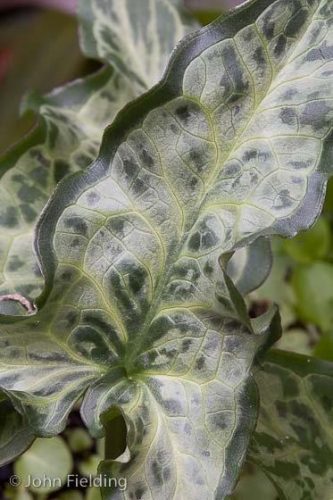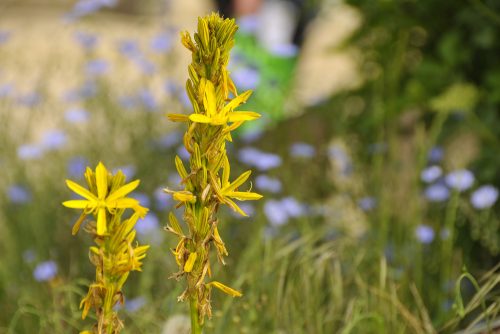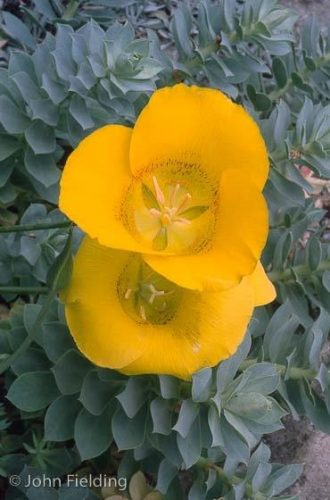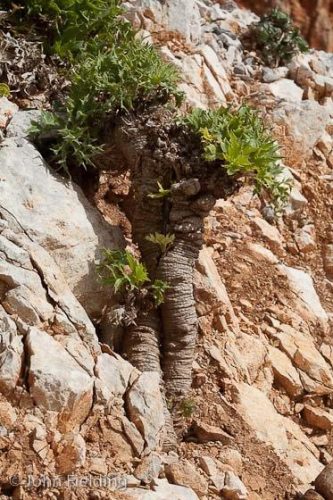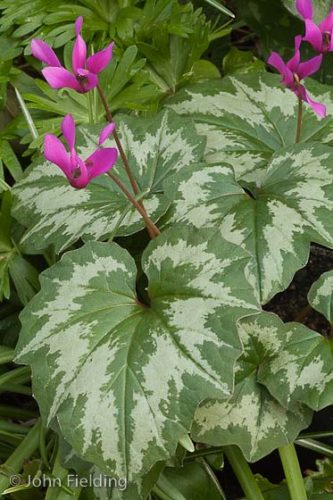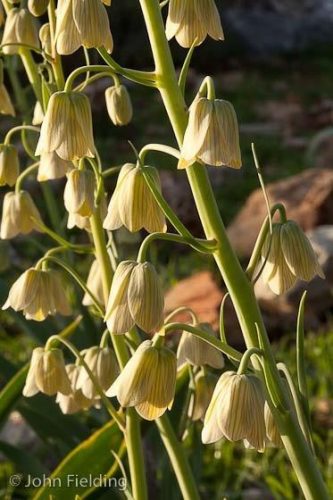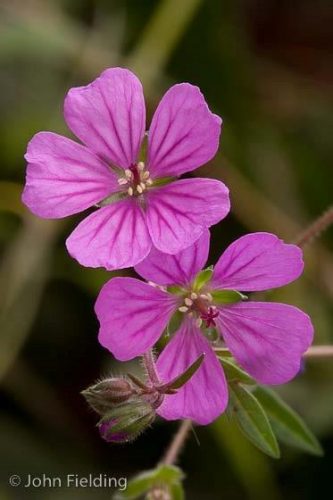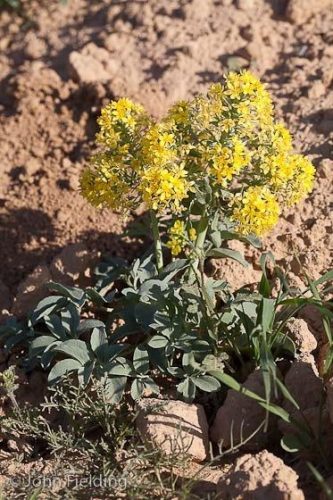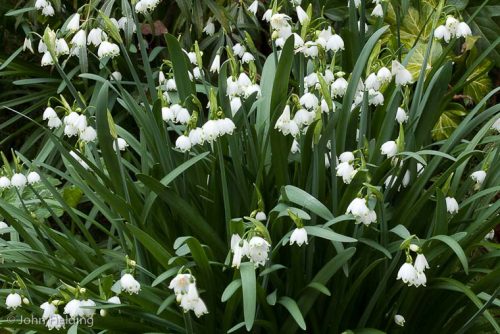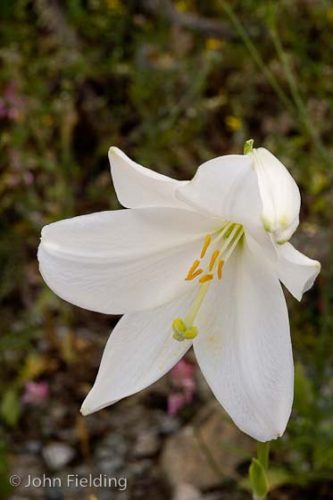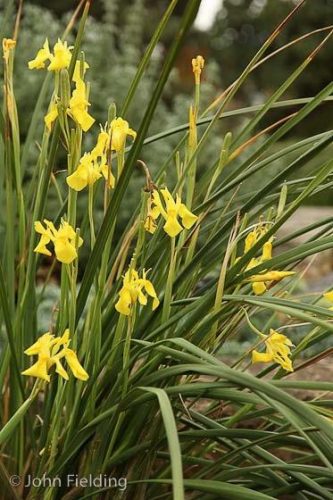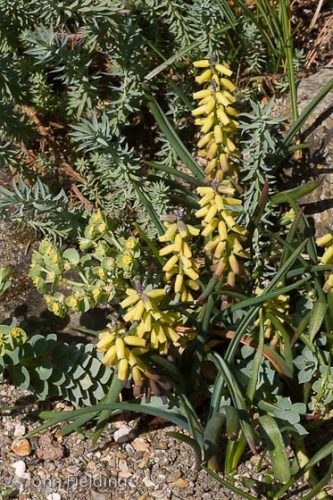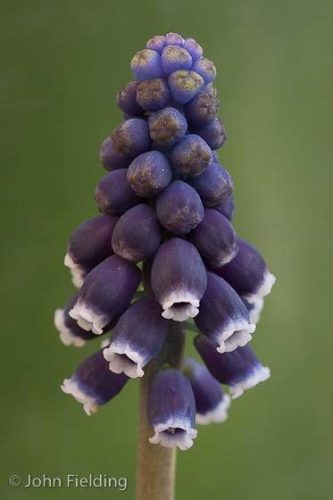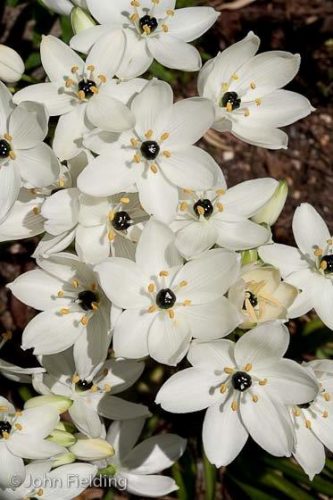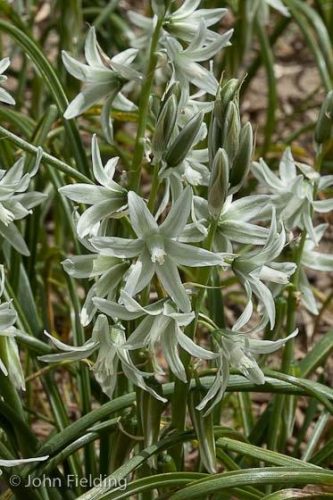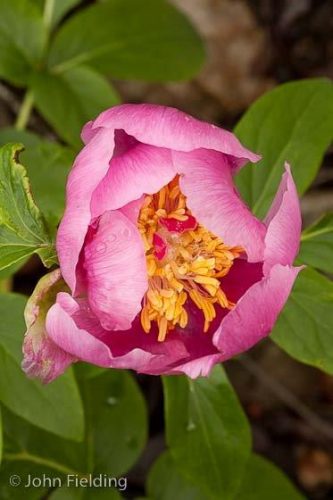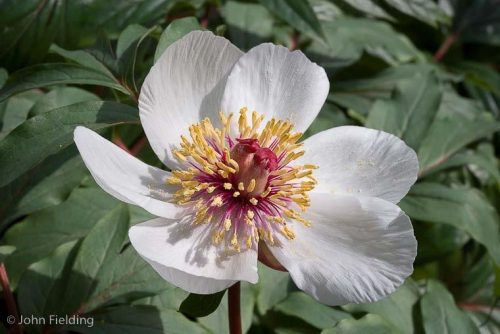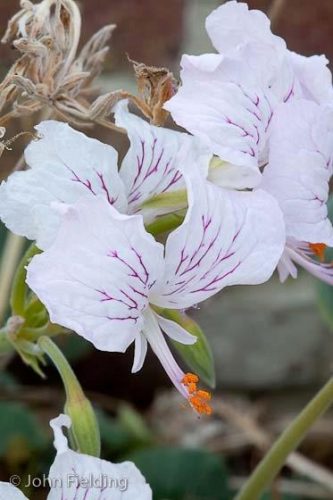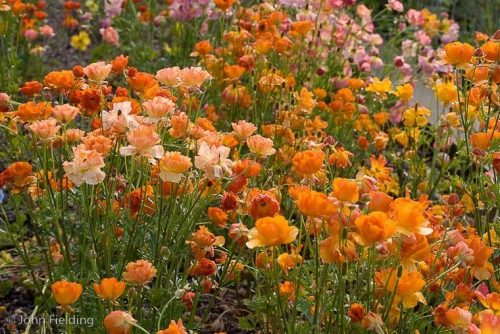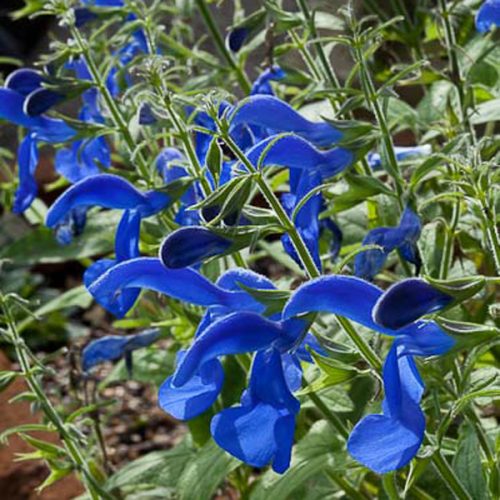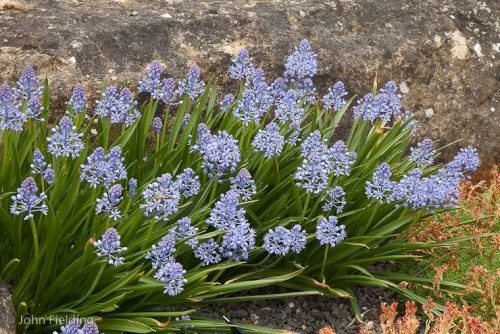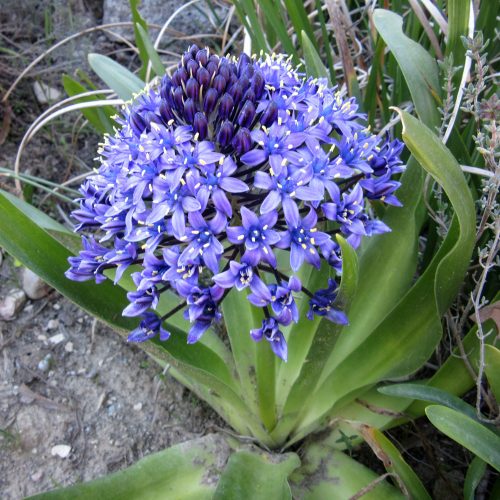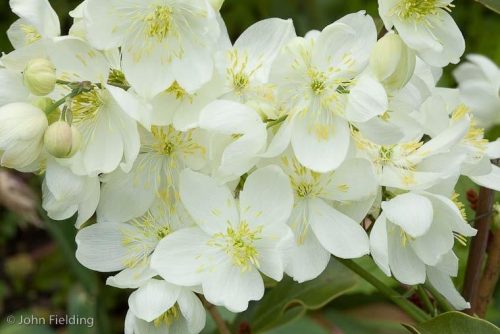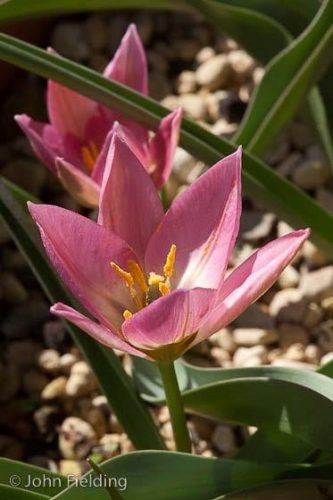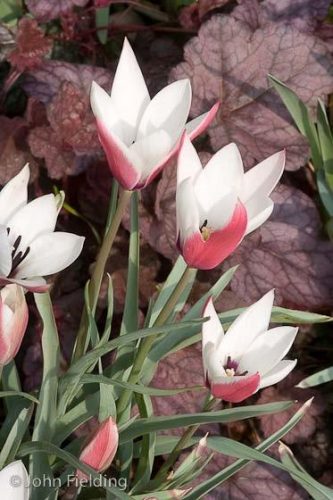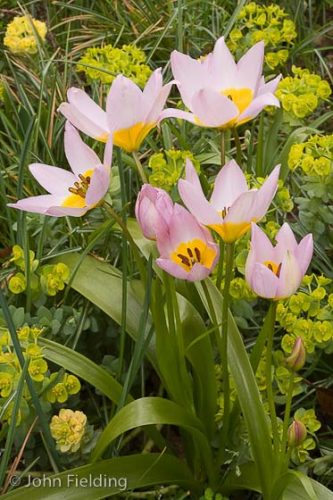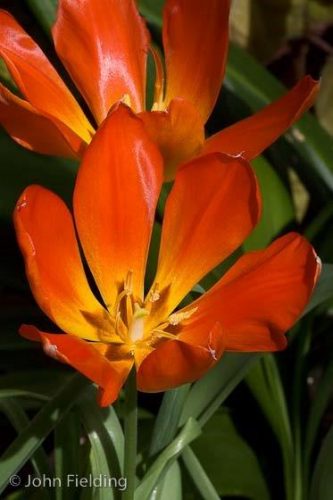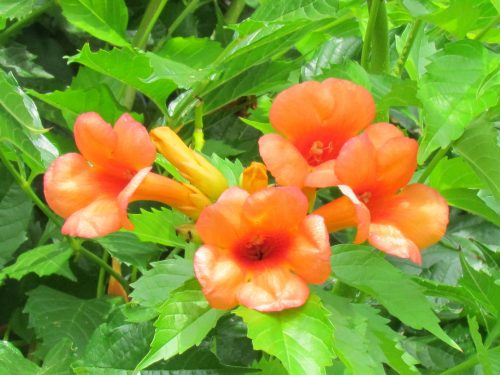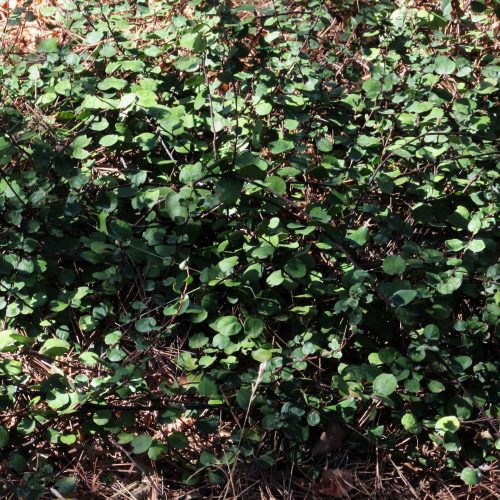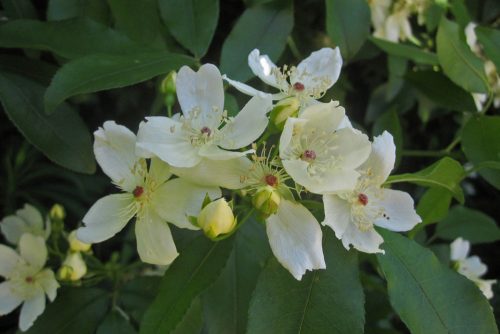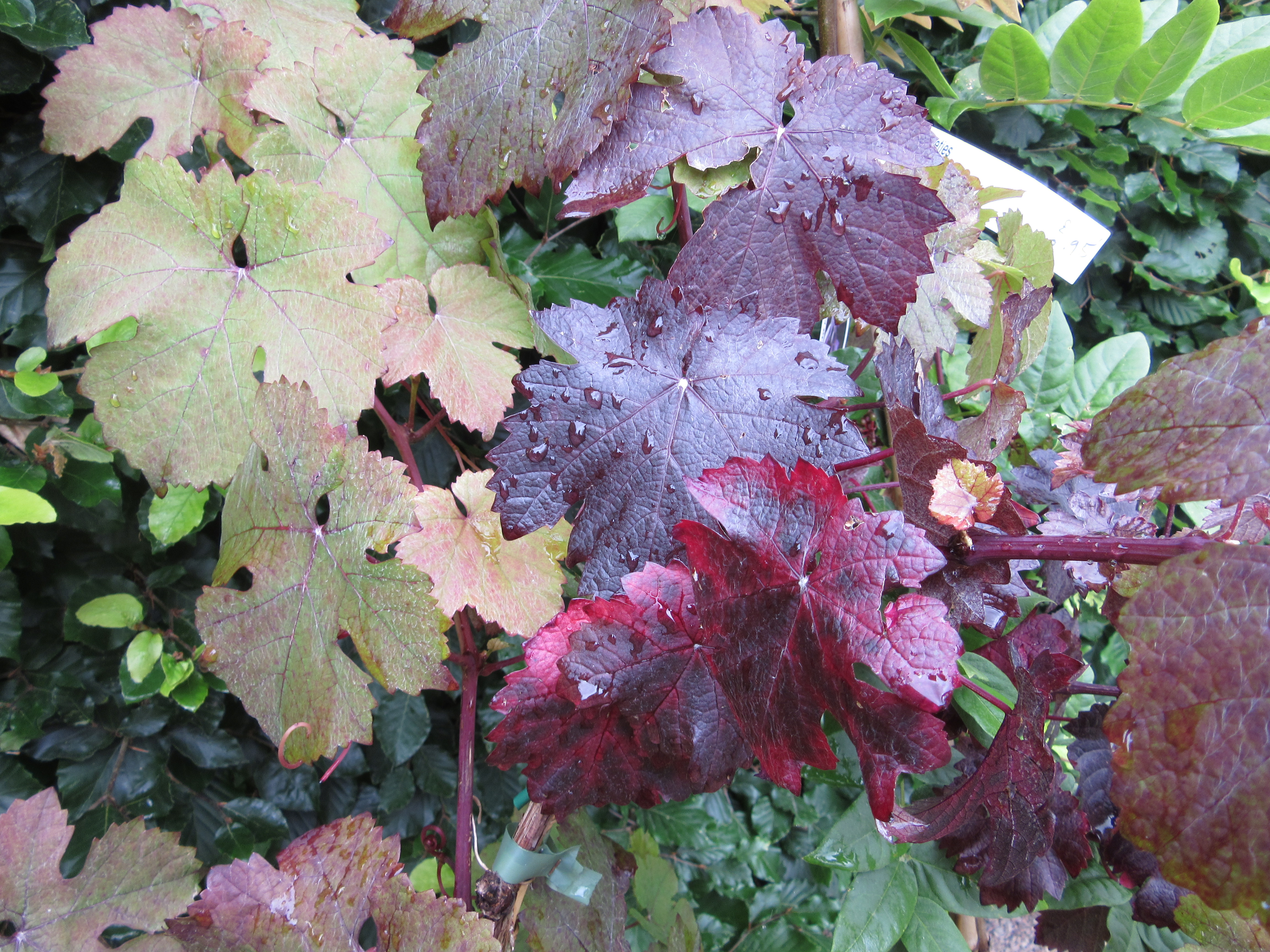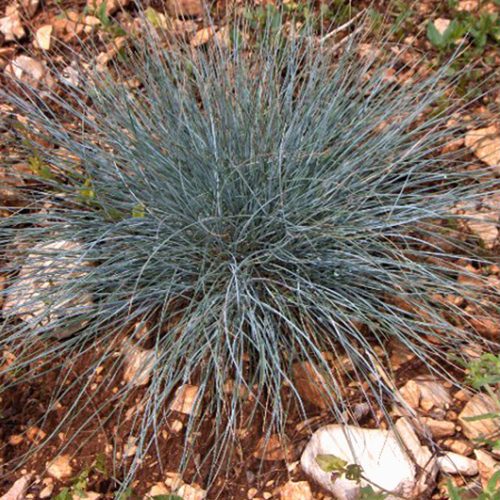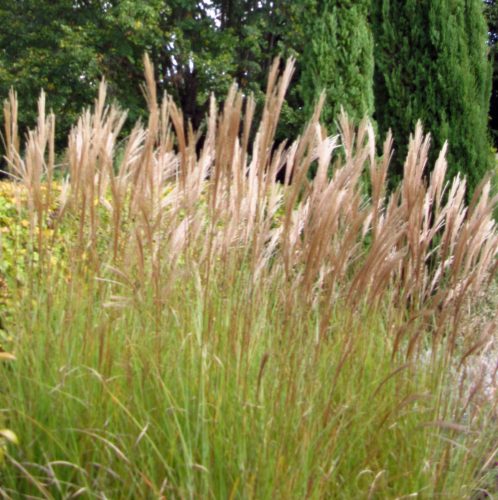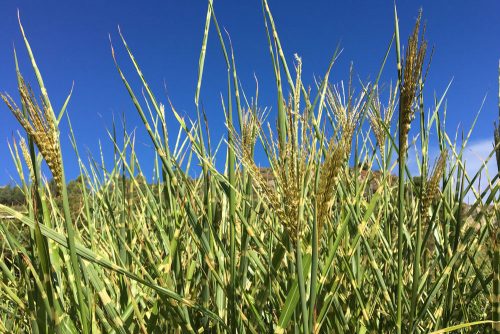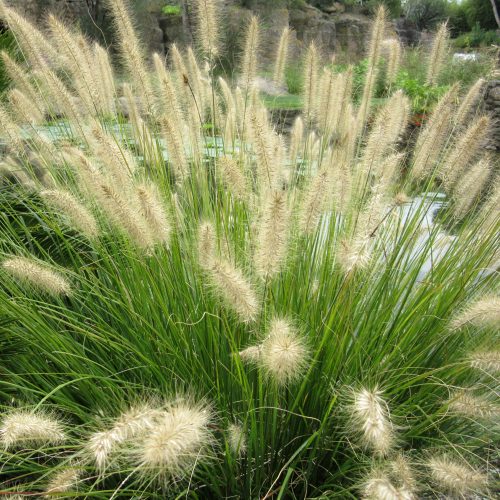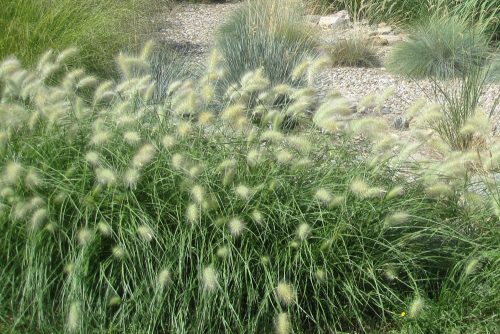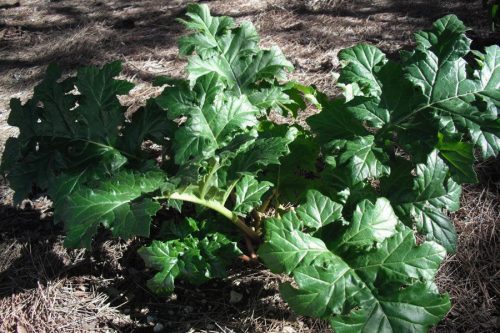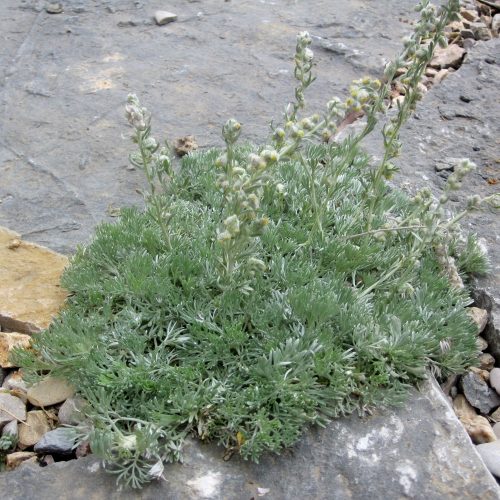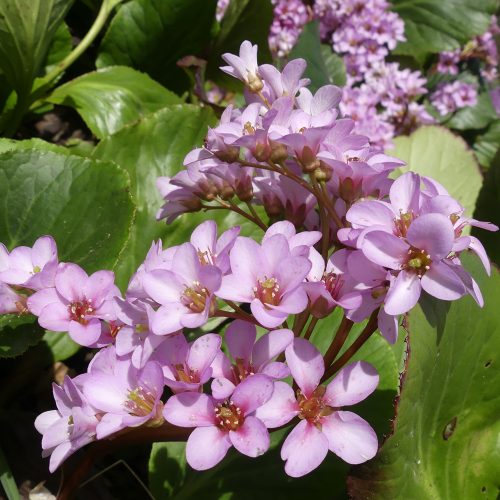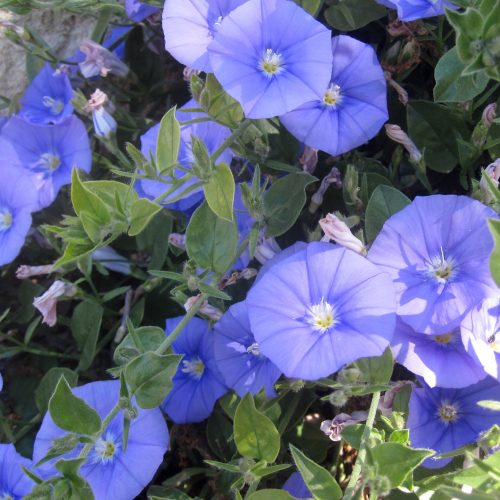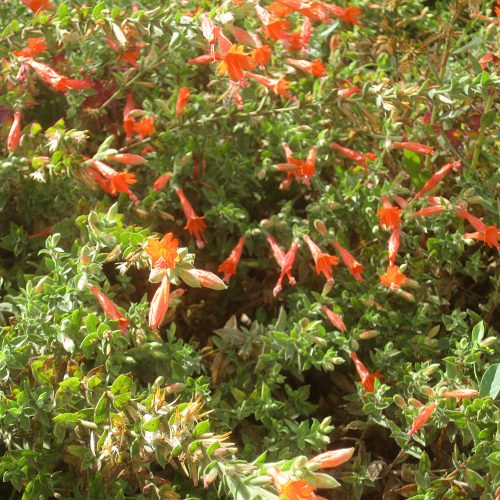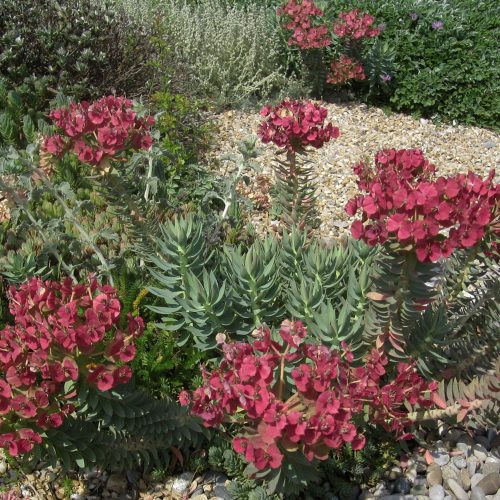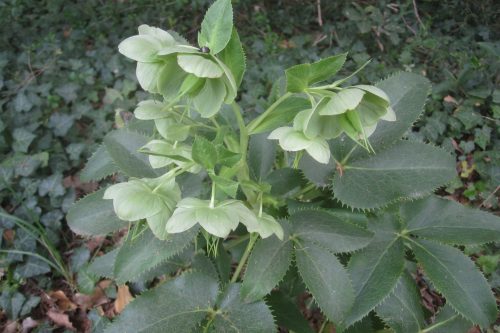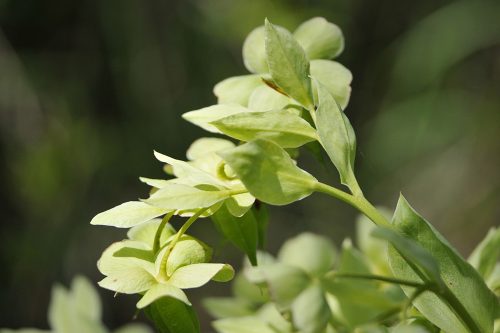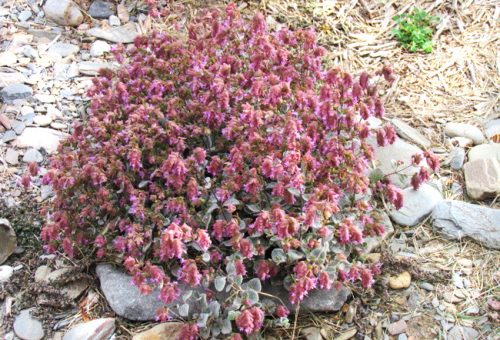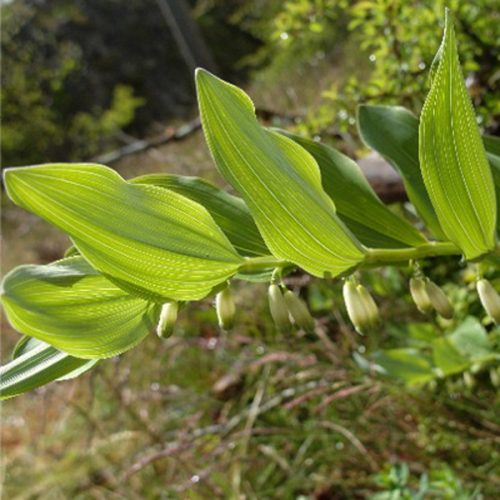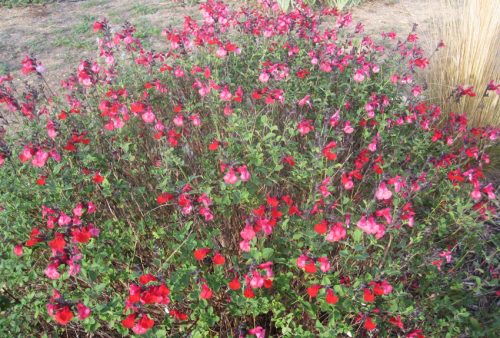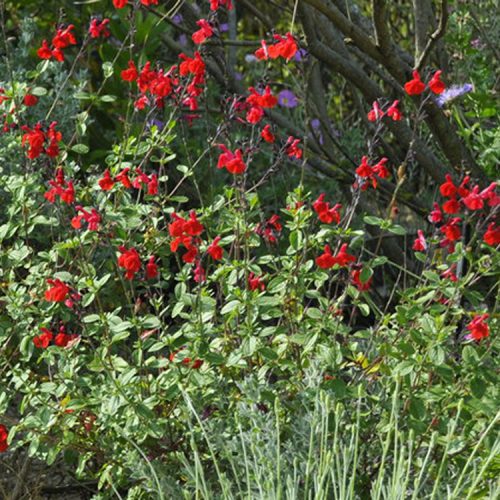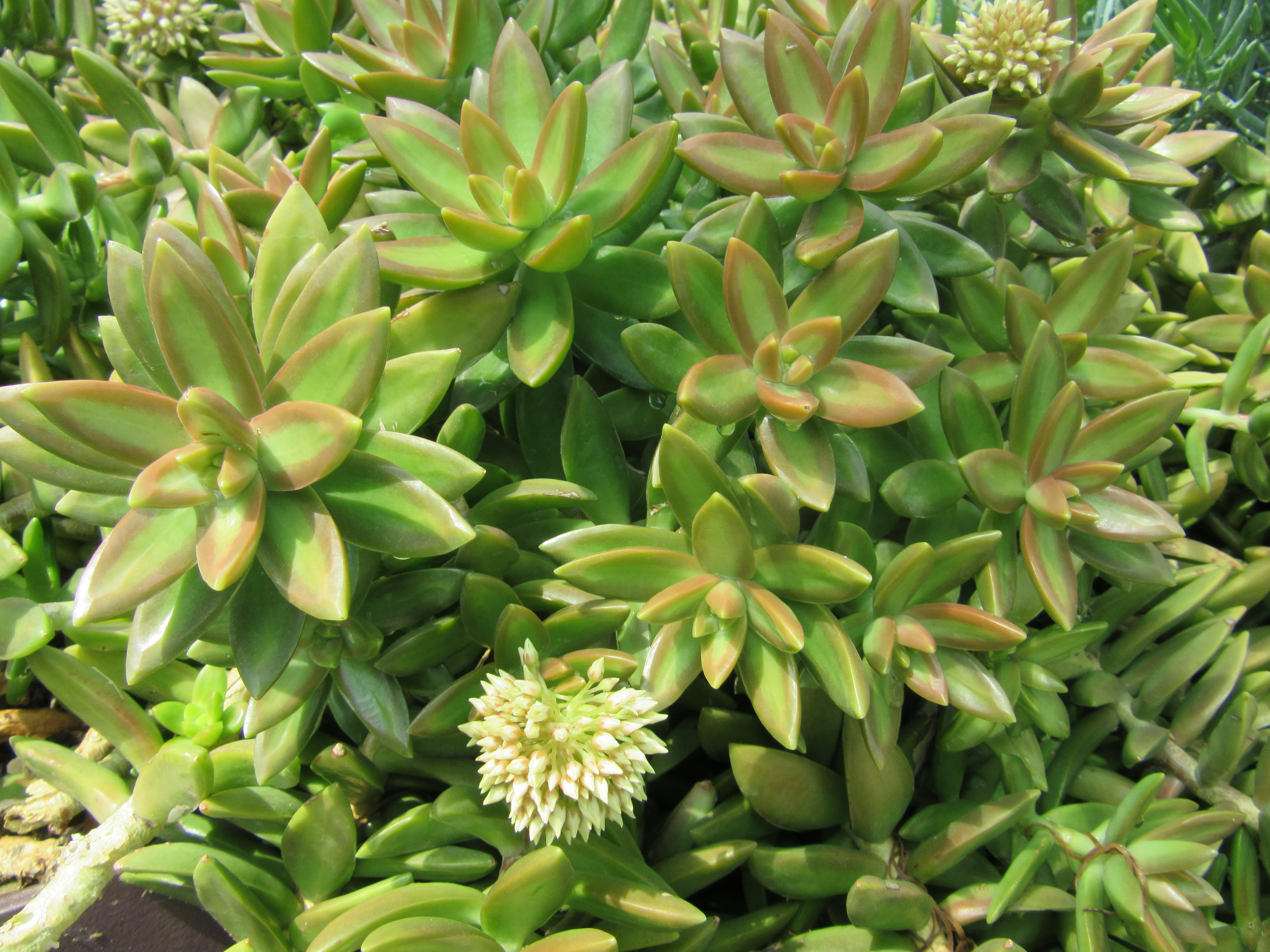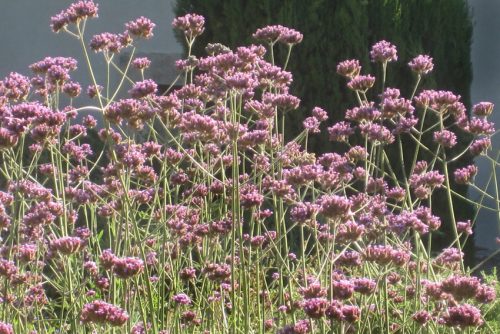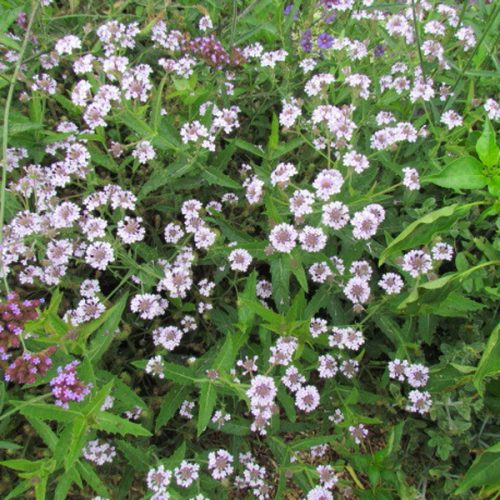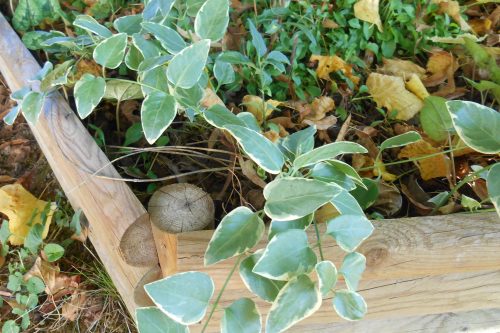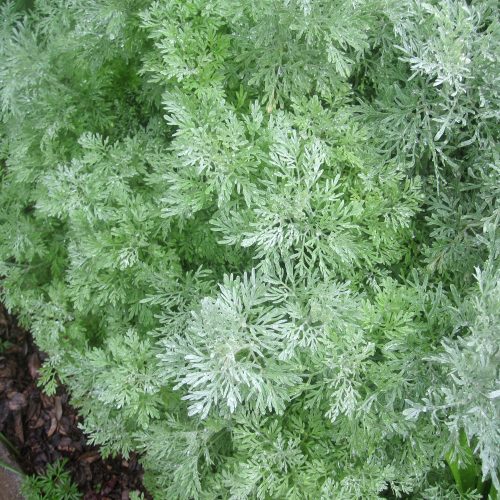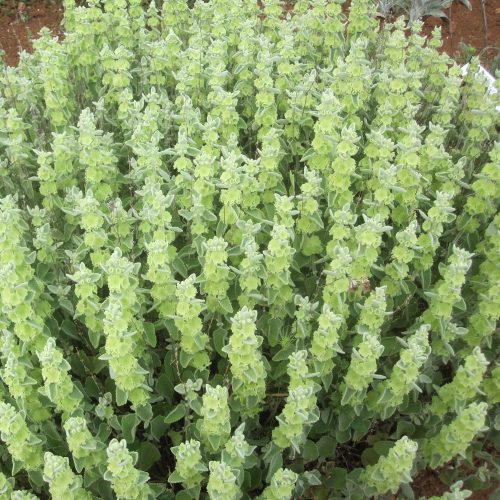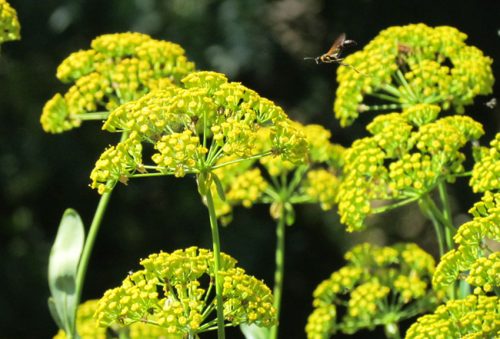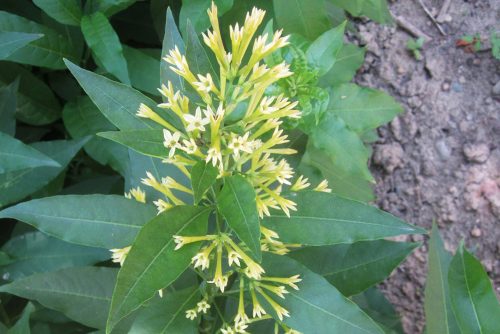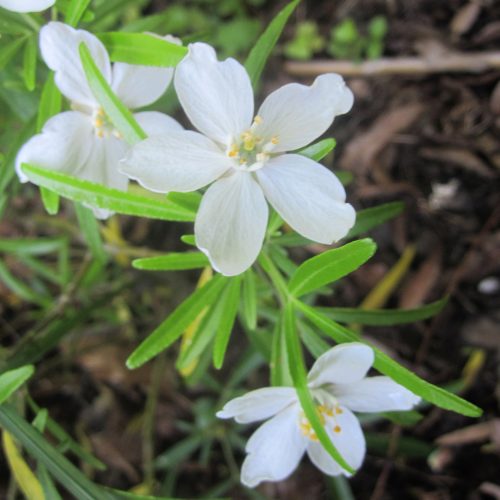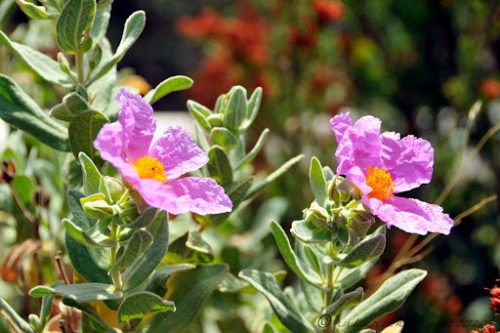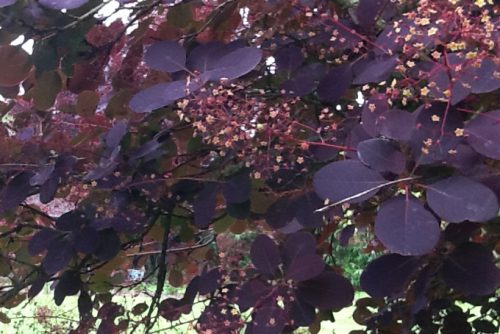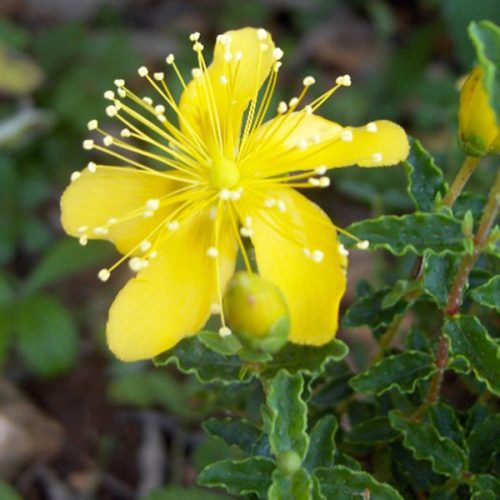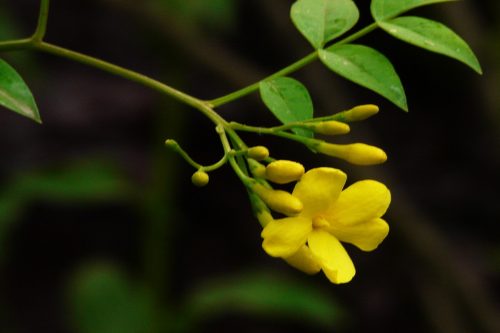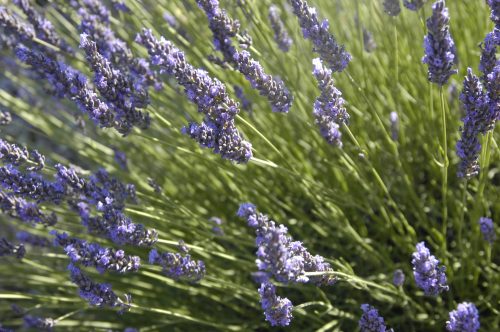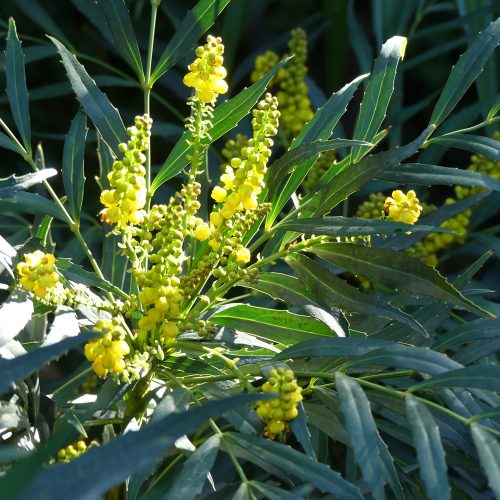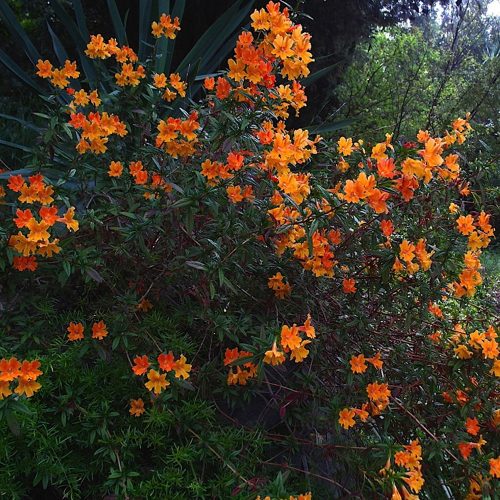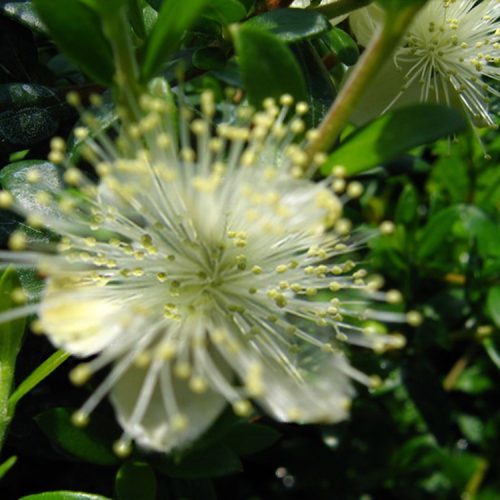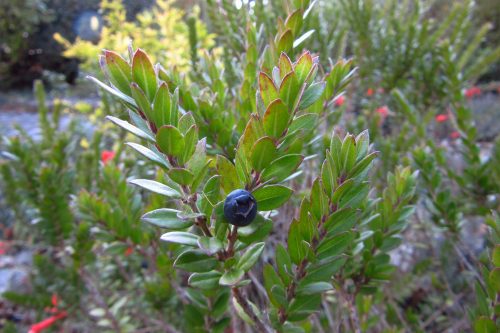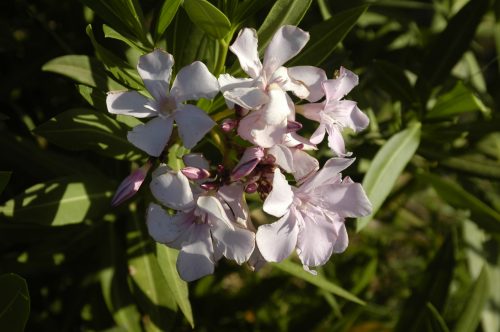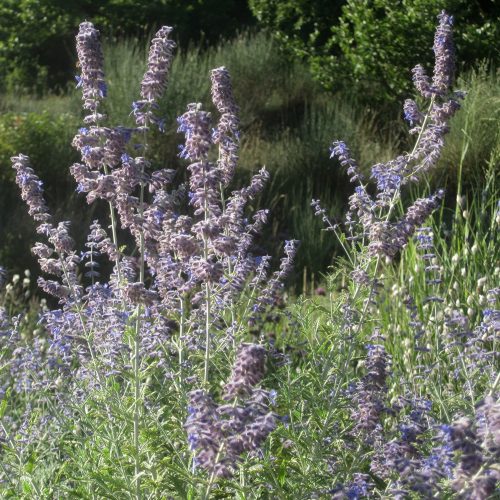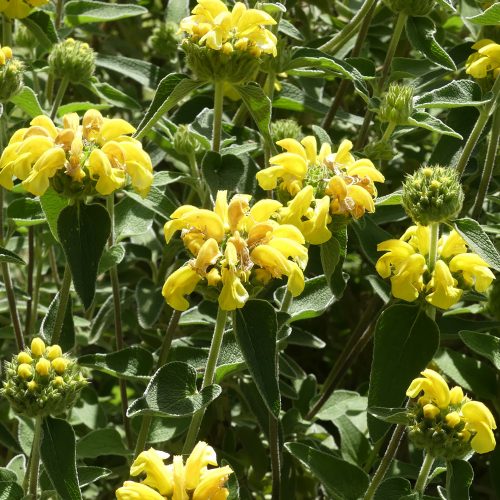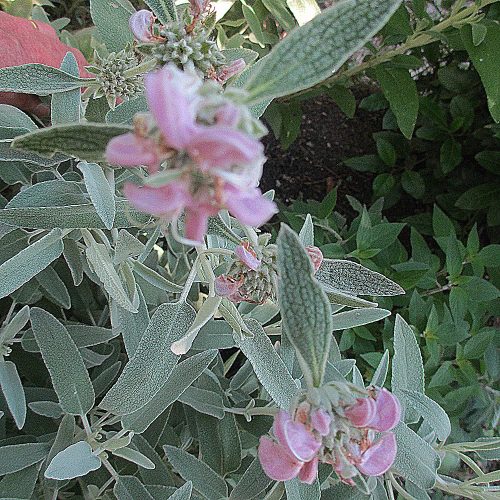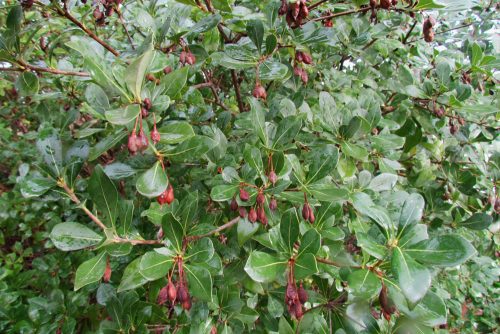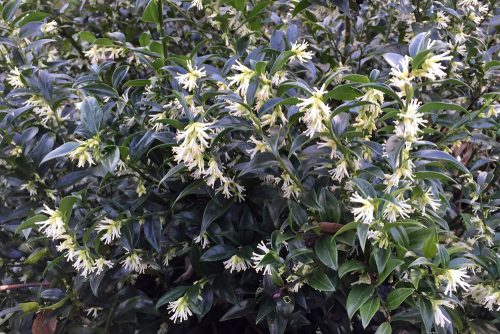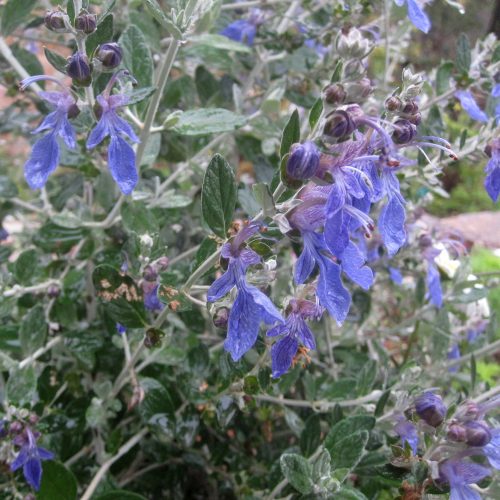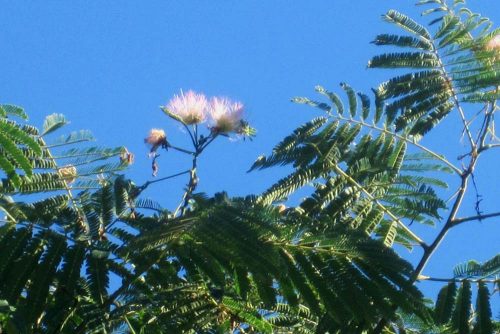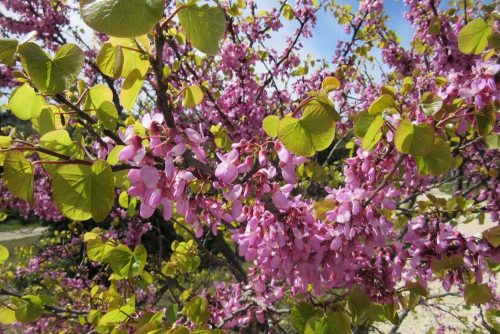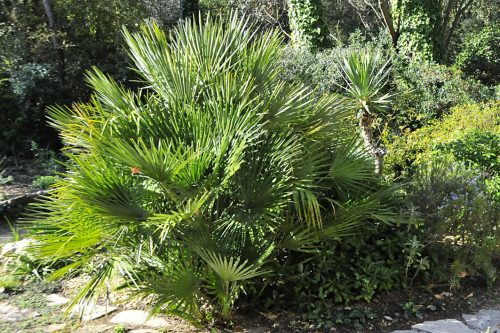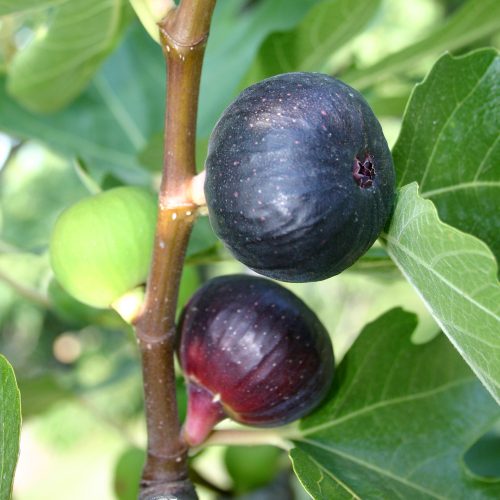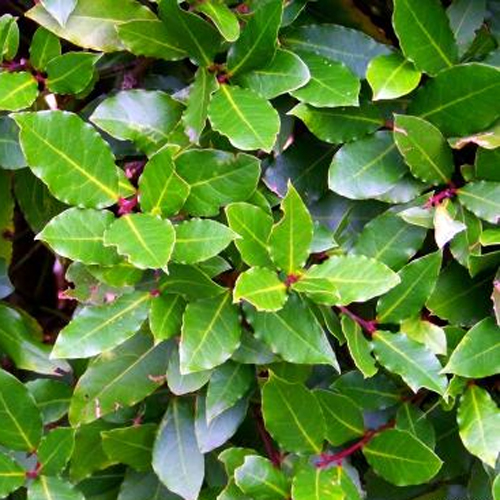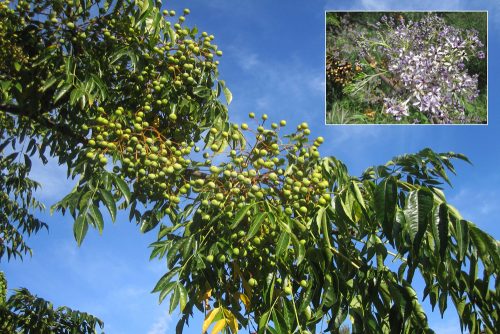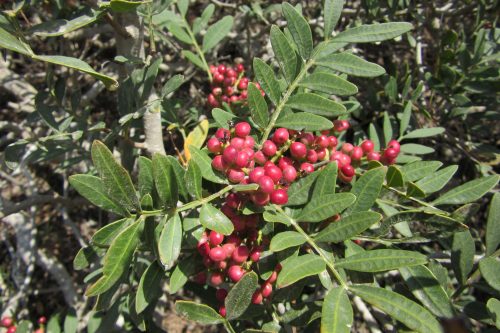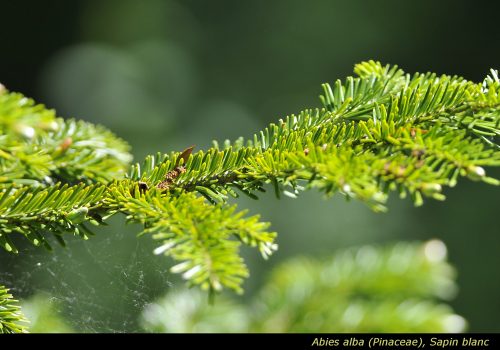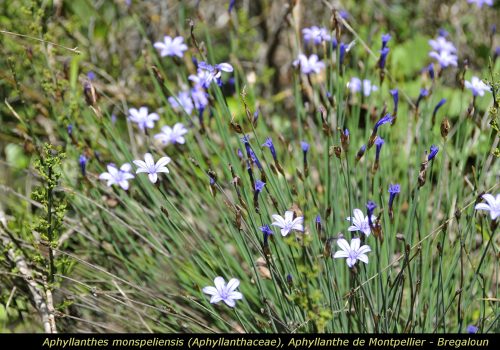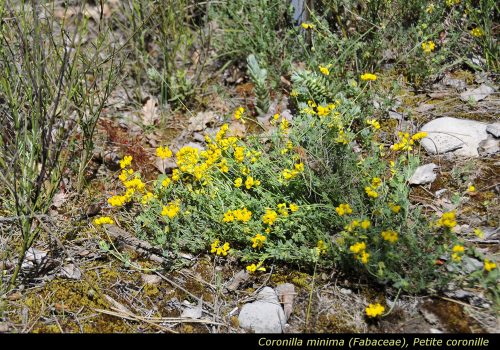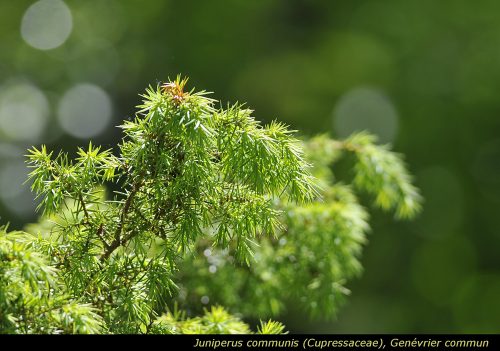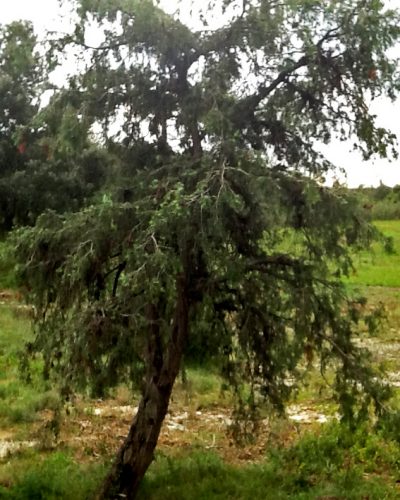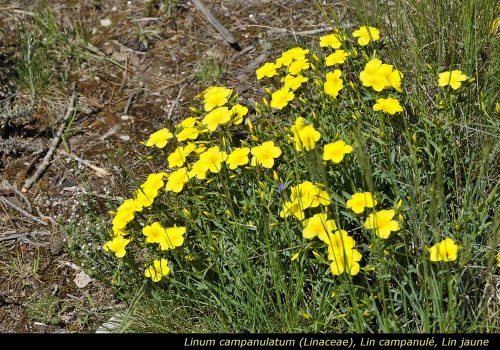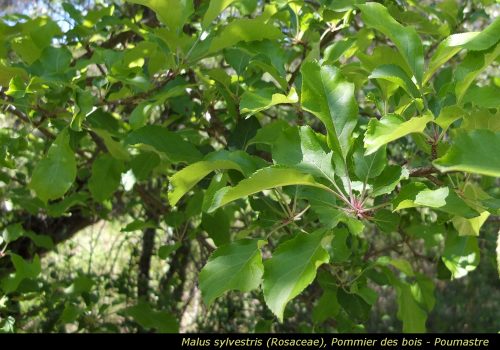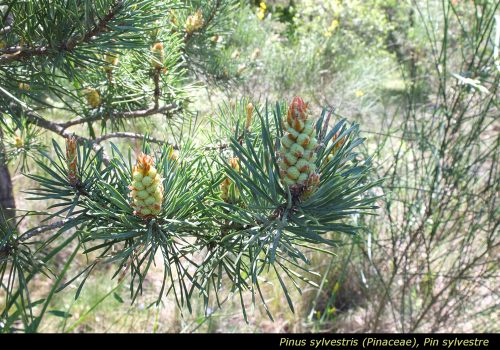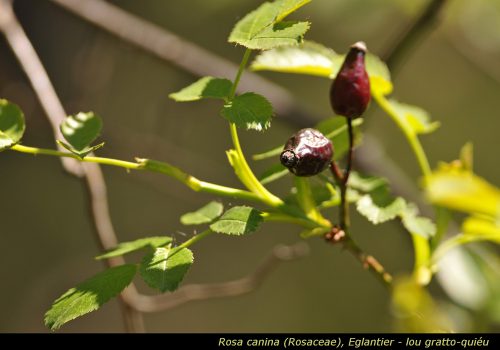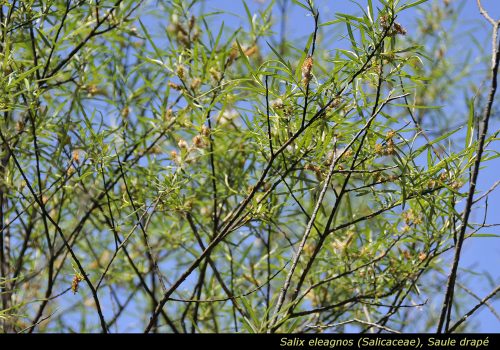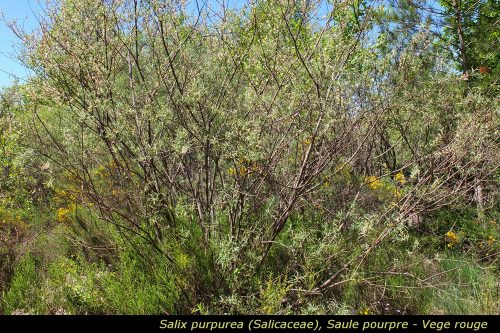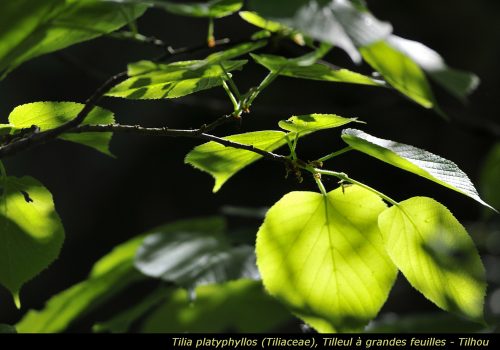![]()
Bulbs from South Africa
Plant lists / Listes de plantes
Bulbs from South Africa
Bulbes Sud-Africains
Photographs by Johann Nieuwoudt
Leigh Nieuwoudt of Simply Indigenous (SA Bulb Company) has sent us this list of summer-flowering bulbs suitable for hot dry summers and winter temperatures to -10˚C.
Leigh Nieuwoudt de la pépinière ‘Simply Indigenous’ (SA Bulb Company) nous a envoyé cette liste des bulbes à floraison estivale qui conviennent pour des été secs et chauds et des températures hivernales inférieurs à -10°C.
Keep dry during winter dormancy
Keep dry during winter dormancy
Needs a little water throughout the year.
Needs well-drained soil. Keep dry during winter dormancy.
Needs well-drained soil. Keep dry during winter dormancy.
Needs well-drained soil. Keep dry during winter dormancy.
Needs a little water throughout the year.
Well-drained soil. Good for rockeries.
Well-drained soil. Good for rockeries.
Keep dry during winter dormancy
Keep dry during winter dormancy
Needs well-drained soil. Keep dry during winter dormancy.
Needs very well-drained soil.
Needs very well-drained soil.
Needs very little water.
Needs well-drained soil. Keep dry during winter dormancy.
Needs well-drained soil. Keep dry during winter dormancy.
Well-drained soil.
Needs well-drained soil. Keep dry during winter dormancy.
Well-drained soil. Needs very little water in winter.
Winter dormant.
Winter dormant.
Keep dry during winter dormancy
Needs well-drained soil. Keep dry during winter dormancy.
Keep dry during winter dormancy
syn. Scilla natalensis
Needs well-drained soil. Keep dry during winter dormancy.
Some water in summer. Keep dry during winter dormancy
Must be planted partially above ground. Needs very well-drained soil.
Keep dry during winter dormancy
Well-drained soil. Needs very little water.
![]()
John Fielding’s Geophyte List
Plant lists / Listes de plantes
John Fielding’s Geophyte List
La liste de géophytes de John Fielding
John Fielding, co-author of Flowers of Crete and a member of the RHS Photographic Advisory Committee, suggests these plants as suitable for the climate in Mediterranean France.
John Fielding, co-auteur de « Flowers of Crete » et membre du Conseil consultatif pour la photographie de la RHS, nous propose ces plantes comme adaptées à notre climat méditerranéen français.
Divide and transplant in autumn.
Plant against a warm wall.
Cultivated strains, such as the De Caen series, have larger flowers, perfect for cutting.
Forms from SW Turkey are ivory white in colour.
Good for naturalising.
Soon to be available from Avon Bulbs.
Cold tolerant as native to high altitudes.
The swollen rhizome-like stem should be at soil level.
Plant deeply to support the stem.
Can reproduce by means of stolons, so naturalises easily.
![]()
Plants which survived well in the heatwaves of 2003 and 2019
Plant lists / Listes de plantes
Plants which survived well in the heatwaves of 2003 and 2019
Plantes résistantes aux canicules de 2003 et 2019
In June 2019, a national record temperature of 46.1°C was measured in Gallargues-le-Montueux in the Gard. The heatwave was experienced for several weeks in June and July across most areas of Mediterranean France and when it was over, members of Hortus compiled a list of plants which had survived well. This list was combined with a similar one compiled by MGS members in France after the heatwave of 2003 to produce this illustrated version.
En juin 2019, une température de 46,1°C était mesurée à Gallargues-le-Montueux dans le Gard, constituant un nouveau record national. La canicule, qui a duré plusieurs semaines de juin et juillet, couvrait la plupart de la France méditerranéenne. Une fois la canicule terminée, les membres de Hortus ont rédigé une liste des plantes qui ont bien résisté à ses effets. En 2003, les membres de MGS France ont créé une liste similaire à celle d’Hortus après la canicule de cette année. La liste illustrée ci-dessous est une combinaison de ces deux listes antérieures.
![]()
Plants growing along the Piboules botanical trail
Plant lists / Listes de plantes
Plants growing along the Piboules botanical trail
La végétation de l’espace botanique des Piboules
Plant notes by Annie Nivière
Photographs by Hubert Nivière
The Piboules botanical trail was created to view the natural riverside vegetation along the left bank of the River Ouvèze, near Entrechaux in the Vaucluse. Between a canal and the river over 160 species of plants can be seen. All were already present prior to the development of the footpaths. Nothing has been planted. Plant labels and information boards enable visitors to learn the scientific name, common name and sometimes the provençal name of many of the plants, as well as their main characteristics.
Le sentier botanique naturel les Piboules a été réalisé au cœur de la ripisylve, formation végétale qui s’étend le long de la rive gauche de l’Ouvèze à Entrechaux dans le Vaucluse. Entre canal et rivière, on découvre plus de 160 espèces de végétaux qui étaient déjà présentes sur le lieu avant son aménagement. Rien n’a été planté. Des plaquettes et des pupitres permettent au visiteur de découvrir le nom scientifique, le nom vernaculaire et parfois le nom provençal de nombreuses plantes ainsi que leurs principales caractéristiques.
Silver fir
Common alder
Euphorbe de Nice
Narrow-leaved ash tree
Spiny genêt
Cade
Crab apple
Scots pine
White poplar
St Lucie cherry tree
Eglantier
Purple willow
Spanish broom
![]()


